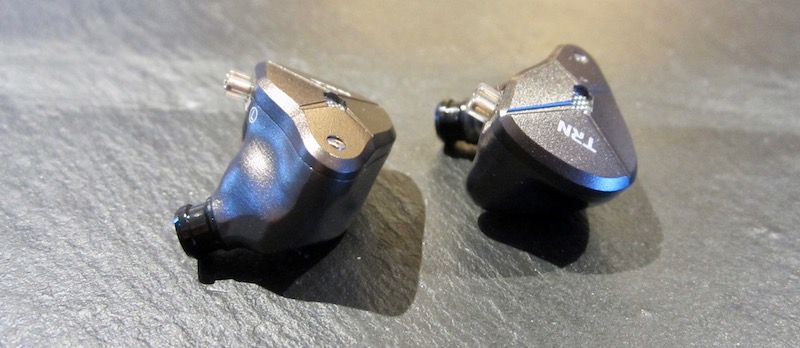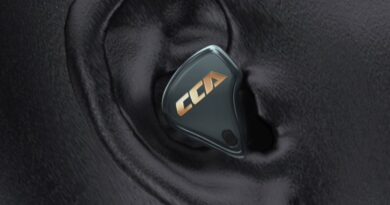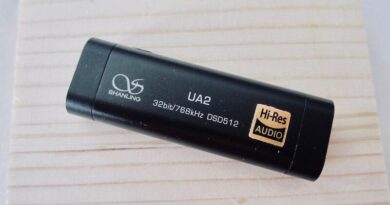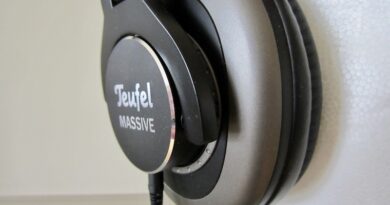TRN BA5 Review (2) – Two Hearts Beat As One
Pros — Work horse and good allrounder from haptic to sound; value.
Cons — Maybe a bit less bass? Another $60-70 multi BA needed?

EXECUTIVE SUMMARY
Best of both worlds: a well-resolving 5 BA with the tuning of a dynamic driver.

INTRODUCTION
The TRN BA5 is another iem tuned by co-blogger KopiOkaya (such as the TRN V90…see bottom of this review). 5 BAs, no dynamic driver for the low end in the budget segment, a risky affair. Following their highly acclaimed V90, TRN are obviously attempting to compete with the model output of Knowledge Zenith. As I always tend to wonder: why 5 whatever drivers in the budget segment instead of a single quality one. Well, KopiOkaya had to work with what he was given (and he did this 200% pro bono, as always). He presumably wondered, too, as he, in my opinion, undermined his job and tuned this earphone like a single dynamic-driver, but with the resolution of a multi-BA. Two ducks with one stone. Clever. After all, we two are single DD aficionados at heart.

SPECIFICATIONS
Driver unit: 5 balanced armature (BA) each side
Impedance: 20 Ω
Sensitivity: 103 dB/mW
Frequency Range: 20-40000 Hz
Connector: 2-pin
Tested at: $65

PHYSICAL THINGS AND USABILITY
Box content of the TRN BA5 as shown in the photo. For some reason, there was only one pair of medium tips included…something must have gone wrong during packaging. Build as depicted: the earpieces are of CnC machined alloy, can’t be much better — they do feel really good in my hands. The design of the TRN BA5’s earpiece is similar to a recent TFZ model and I wonder who copied from whom…and speculate both copied from somebody else. The nozzles are a bit on the short side so that the earpieces have to be inserted deeply. Fit is otherwise ok, and so is comfort, isolation is only soso. Cable works but is not the sexiest around. In terms of tips, in the absence of large stock tips, JVC Spiral Dots worked best for me…but they are pricy and I am a budget guy at heart so that these did the job equally well…no sound differences found [Warning: these narrow-bore budget eartips are well made but they generate a boomy bass in most earphones…good for pure BA multis but no so much for dynamic drivers].



As source I used a Macbook Air with a Schiit Fulla amp and an iPhone SE with and without the Audioquest Dragonfly dac/amp.

TONALITY AND TECHNICALITIES
My tonal preference and testing practice
The TRN BA5 is a surprisingly bassy earphone. One would think the assigned BA does not dig that deep and has a fast decay. Not here provided the right tips are used. The level does not drop off into the sub-bass. And I would call the bass rather on the slow side (for a BA). Decay is almost dynamic like, maybe a bit faster. The low end is a massive brick wall (with 3% spandex like in your jeans) and I wished it was a bit more textured.



Yes, the bass smears a bit into the lower midrange/male vocals, which has a positive, amplifying effect when it comes to rhythm guitars: it adds this feel of satisfaction. Without such, it can remove sparkle and clarity from the image and veil it a bit. The vocals department is actually pretty decent: voices, male and female, are well sculpted and reasonably intimate. The mids are refreshed by these moderate 2 kHz and 4.5 kHz peaks: nevertheless no sibilance or piercing, no hardness or hardness. Note weight in the midrange is also quite good. Similar with the treble: it is pretty forgiving. The tuner clearly has responded to the preferences of the western ear. Overall, I’d call the sound of the TRN BA5 robust because of their strong low end. In less bassy pieces, the clarity is excellent.


Playing the tips game “modding 201”: I tried the “Flip Tips” as invented by Slater, which effectively extend the nozzles, that is the distance from the nozzle’s front to the ear canal is increased. This slims down/cools the sound, adds air, and attenuates the bass — which also enhances clarity and 3-D perception. The result may appeal to the audiophile-inclined listener.

Remember: tips are the way more effective and much cheaper option for changing sound than cables.

Imaging of the TRN BA5 is very good, too: the stage has quite some depth and it also rather tall. Width is average. Stage can be quite crowded with complex instrumentations. Surprisingly the single dynamic-driver Trident Diamond prototype separates better in busy situations. Timbre is not as natural as a single DD in this class, such as the Blon BL-03 or the forthcoming Trident Diamond, but it beats the Blons in terms of note definition. The older brother TRN V90 has a more organic timbre but lags slightly in technical finesse, especially in the midrange. I personally don’t care that much about resolution but more for the timbre as I listen to classical music. The TRN BA5 is almost there with its timbre…yes, I listened to a piano concerto without pain…but it works best with rock, pop, edm, and similar genres. Sorry that I can’t compare the TRN BA5 to similarly priced KZ models…I have learnt to survive without repeated disappointment from unsatisfactory tuning (“thin, overenergetic, agressive mids”) and therefore have no recent model handy (apologies if I do injustice to their latest iterations).

CONCLUDING REMARKS
The TRN BA5 adds another budget multi to this crowded market segment. Yes, it is a good one: does everything I want it to do: well made, well priced…a work horse that does the job well. While I am not sure that the world needs another budget multi iem, this one files under “can’t really go wrong with it”. The tuning of Kopiokaya makes the difference here, who, as a Singaporean, also understands the preference of the western ear. I used the TRN BA5 for hours on end and always had a good time. And you will, too.
Keep on listening!

You find an INDEX of all our earphone reviews HERE.

DISCLAIMER
The pair of TRN BA5 was supplied unsolicited by TRN and I thank them for that.
Our generic standard disclaimer.

RELATED…







Let me add this, not all tuners have the final say. In BA5’s case, I don’t have the final say. I actually wanted TRN to dial down the upper midrange more BUT they said this would defeat the purpose of an “ALL BA sound”. So, I compromised.
KopiOkaya, I see you’ve been in contact with both Yinyoo and TRN. From your experience, how do the IM2 and Ash differ?
I tuned both IM2 and Ash. They are basically the same thing except Ash has better treble extension after 6Khz.
KopiOkaya, I just wanted to say that you did a brilliant job of tuning the BA5. You made a good compromise between BA and DD tuning, and made a superior IEM to what TRN may have envisioned.
It has all the strengths of a BA IEM, but the tuning is more neutral and even musical than a lot of the BA hybrid-types that are out there.
I think you have shown that it can be very helpful to harmonize BA drivers together in a more pleasant and mature tuning than is typical. The BA5 is one of the cleanest sounds I have ever heard, but with the speed and soundstage of an all-BA set. It is absolutely amazing for techno-styled music that doesn’t rely on bass too much.
I’d be interested in a ‘super-BA5’ that is similar configuration and your tuning but with higher-quality BA drivers.
For a first foray into modern Chifi (coming from Soundmagic PL50), and for home, airplane and stage monitor use, are the BA5 or the V90 more preferred?
I like the PL50s, but want to upgrade. Mostly listen to Cantopop, pop, R&B.
I prefer the TRN V90 because of their more natural timbre. The TRN BA5 are technically better (resolution etc.) but less musical imo. I tested the V90 on a flight from western Canada to Ireland and back, and they worked very well for in-flight movies.Thanks! Since my PL50s still work, maybe having something with the DD can help to compliment my headphone portfolio! Beyond the V90, any other recommendations you might give as well?
For stage monitoring, noise isolation is crucial. If you want me to choose between V90 and BA5, I will choose BA5. But if you want me to choose I ideal IEM for stage monitoring, I will go for either TRN IM1 Pro, IM2 or Yinyoo Ash.
I am looking for an budget IEM, one that will be good for stage monitoring and especially for voice hearing. Which IEM would you recomend?
How much do you want to spend?Max €50
Any brand in mind?